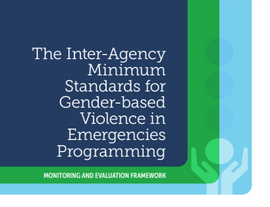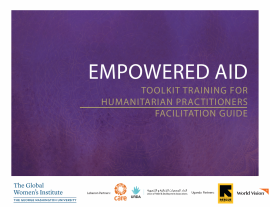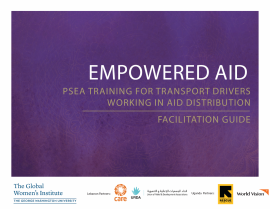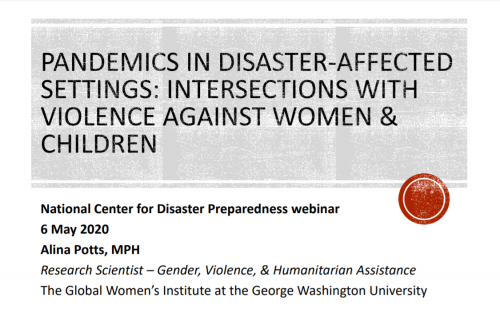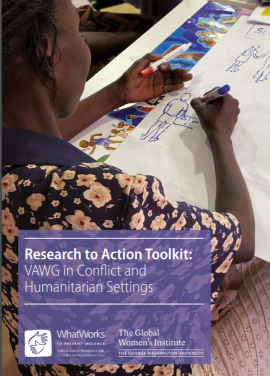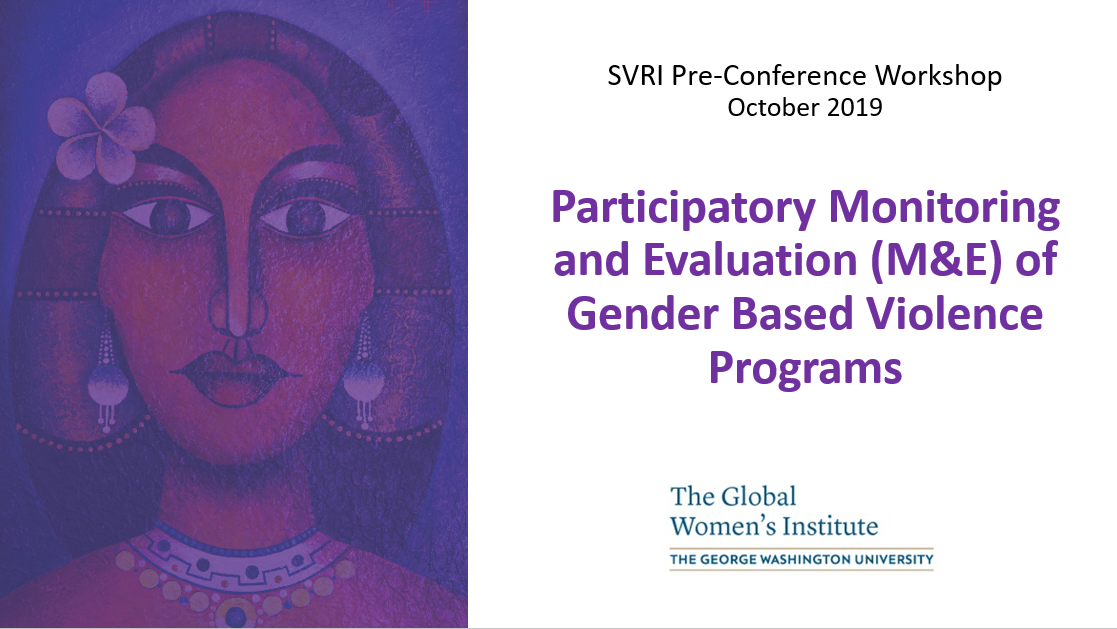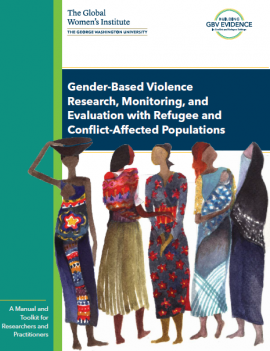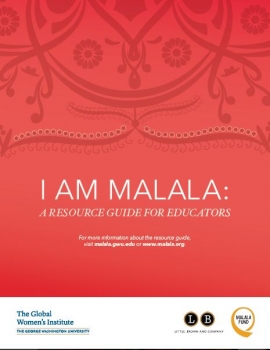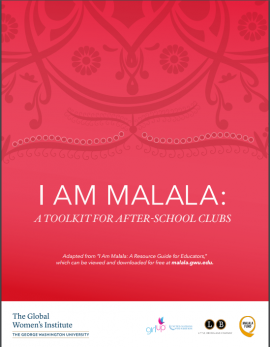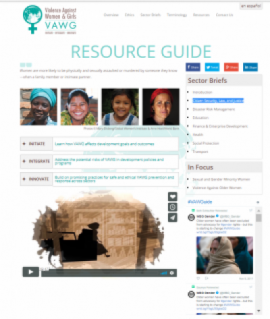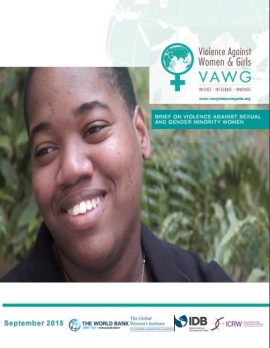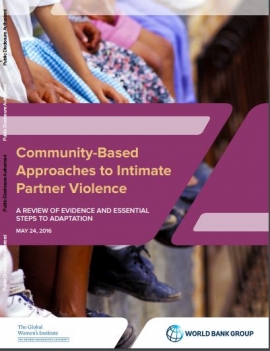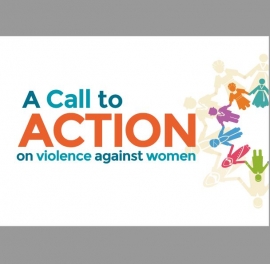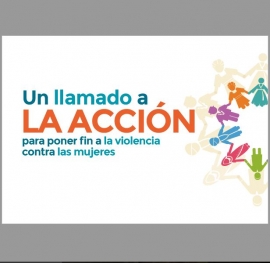Manuals & Toolkits
The Inter-Agency Minimum Standards for Gender-based Violence in Emergencies Programming
In 2019, the GBV Area of Responsibility (AoR) developed 16 Minimum Standards that aim to “establish a common understanding of what constitutes minimum GBV prevention and response programming in emergencies” (GBViE MS). The Minimum Standards seek to establish a common understanding of what programs should seek to achieve to be 1) reflective of good practice and 2) not cause harm. By achieving these minimums, humanitarian agencies will implement GBV programming that meets adequate quality, enhances accountability, and improves programme quality. Engagement of women and girls is critical to the implementation of the Minimum Standards, and women and girls should be key actors throughout the design, implementation, monitoring and evaluation of the standards.
The Minimum Standards lay out a number of principles that underlie their implementation. These principles can also be helpful to guide monitoring and evaluation (M&E) practices that help measure the progress of implementing the Minimum Standards.
Toolkit Training for Humanitarian Practitioners
This training guide is accompanies the Empowered Aid Toolkit for Planning and Monitoring Safer Aid Distributions, training humanitarian practitioners how to utilize the tools, design safer distributions, and reduce the risk of SEA associated with distributions. Click here to view the accompanying slideshow. This training guide and PowerPoint presentation can also be accessed through the Toolkit shared drive: https://gwu.app.box.com/v/eamonitoringtoolkitannex
PSEA Training for Transport Drivers Working in Aid Distribution
This training guides outlines specific ways in which humanitarian actors can provide PSEA training for transport drivers. The aim of conducting this training is to increase the understanding of SEA posed to aid recipients related to transportation. Click here to view the day one and day two presentations for this training guide. This training guide and PowerPoint presentation can also be accessed through the Toolkit shared drive: https://gwu.app.box.com/v/eamonitoringtoolkitannex
Children of Puerto Rico and COVID-19: At the Crossroads of Poverty and Disaster
As part of a webinar series, GWI Research Scientist Alina Potts participated in a panel: Children of Puerto Rico and COVID-19: Strategies to address domestic violence and child abuse during remote learning, school closures, and compounding household economic stressors. The moderator of the session was Yesenia Delgado and speakers included Gilda F. Rodríguez Díaz, Carlos Albizu University – San Juan Campus and Jodie Roure, John Jay College of Criminal Justice, CUNY.
The powerpoint presentation is also available in Spanish. You can find more information on the session, the speakers and additional powerpoint presentations on webinar series homepage under Session 5: https://bit.ly/rcrc-c19webinars
Research to Action Toolkit: VAWG in Conflict and Humanitarian Settings
Through the What Works to Prevent Violence Against Women and Girls (VAWG) programme funded by the UK Department for International Development programme, the Global Women’s Institute (GWI) and International Rescue Committee (IRC) have focused on developing new evidence to address gaps in understanding of VAWG during conflict and humanitarian crises, including implementing a landmark population-based study on the prevalence, forms and drivers of VAWG in conflict-affected South Sudan. In order to bridge the gap between research and action, this toolkit has been developed to support non-academic stakeholders to understand and interpret the data gathered through population-based research on VAWG and to create a process for moving from evidence to implementing action. The Research to Action tool provides a step-by-step process for practitioners and policymakers to better understand and utilize data generated by VAWG research activities.
SVRI Pre-Conference Workshop Presentation: Participatory Monitoring and Evaluation (M&E) of Gender Based Violence Programs
As part of a pre-conference workshop at the 2019 SVRI Forum in South Africa, GWI presented "Participatory Monitoring and Evaluation (M&E) of Gender Based Programs".
Gender-Based Violence Research, Monitoring, and Evaluation with Refugee and Conflict-Affected Populations: A Manual and Toolkit for Researchers and Practitioners
Developed with support from the US Department of State Bureau of Population, Refugees and Migration and the UK Department for International Development, this manual aims to support researchers and members of the humanitarian community in conducting ethical and technically sound research, monitoring and/or evaluation on gender-based violence (GBV) within refugee and conflict-affected populations.
I Am Malala: A resource guide for educators
The resource guide is targeted towards high school, college and university students in the U.S. and overseas. It was designed as a series of lessons based on themes extracted from the memoir, I Am Malala, and is intended to enrich a variety of academic programs. It can also be taught as a single course around the book. It provides a window into complex issues of politics, history, human rights, religion and tradition through the lens of one girl's story. This was produced in partnership with The Malala Fund. More resources for educators can be found on GWI's page dedicated to the Malala Fund.
I Am Malala: A toolkit for after-school clubs
Recognizing the growth and enthusiasm of after-school clubs, the Global Women's Institute has also developed an I Am Malala: A toolkit for after-school clubs. This toolkit follows the same themes as the resource guide, but includes more activity-based material for the purpose of peer-led, after-school club groups. It is also less necessary to have access to Malala's memoir in order to use the toolkit. This was produced in partnership with The Malala Fund. More resources for educators can be found on GWI's page dedicated to the Malala Fund.
Violence against Women and Girls Resource Guide (available both in English and Spanish)
GWI, in partnership with the World Bank and the Inter-American Development Bank (IDB) created a resource guide that aims to provide the reader with basic information on the characteristics and consequences of VAWG. It also offers guidance on how to integrate VAWG prevention and the provision of quality services to violence survivors within a range of development projects across sectors.
The resource guide includes sector-specific briefs for integrating VAWG into development work in a variety of areas. These sectors include: Citizen Security, Law, and Justice, Disaster Risk Management, Education, Finance & Enterprise Development, Health, and Social Protection. GWI is currently working with partners on adding more sectors for this ongoing project.
This product is made possible through the generous support of the Australian Government Department for Foreign Affairs and Trade (DFAT).
Brief on violence against sexual and gender minority women
Across the globe, sexism, misogyny, homophobia and transphobia lead to violence against LBT women, ranging from bullying, harassment and violence in families and communities to sexual assault and brutal extrajudicial killings. However, the bulk of discourse and action surrounding gender equality and women’s empowerment in the development community has assumed a normative notion of “woman” as heterosexual and cisgender. This means LBT women are largely excluded from the critical dialogue that informs development programs and investments and the benefits that are derived from them. This includes actions aimed at reducing violence against women and girls (VAWG). A gender equality agenda within the larger global goals of advancing economic development, eliminating extreme poverty, and boosting shared prosperity must address the root causes of inequalities as well as their consequences for women of all gender and sexual identities and men who do not conform to entrenched societal norms of masculinity.
Community-Based Approaches to Intimate Partner Violence: A review of evidence and essential steps to adaptation
Call to Action (english)
Call to Action (Spanish)


